Mechanical and Morphological Properties of Bio-Phenolic/Epoxy Polymer Blends
Abstract
1. Introduction
2. Materials and Methods
2.1. Materials
2.2. Fabrication of Polymer Blends
2.3. Characterization
2.3.1. Tensile Properties
2.3.2. Flexural Properties
2.3.3. Impact Properties
2.3.4. Scanning Electron Microscopy (SEM)
3. Results and Discussion
3.1. Tensile Properties
3.2. Flexural Properties
3.3. Impact Properties
4. Conclusions
Author Contributions
Funding
Institutional Review Board Statement
Informed Consent Statement
Data Availability Statement
Conflicts of Interest
References
- Chen, Z.; Li, T.; Yang, Y.; Liu, X.; Lv, R. Mechanical and tribological properties of PA/PPS blends. Wear 2004, 257, 696–707. [Google Scholar] [CrossRef]
- Utracki, L. Commercial Polymer Blends; Chapman & Hall: London, UK, 1998. [Google Scholar] [CrossRef]
- Subramanian, M.N. Polymer Blends and Composites: Chemistry and Technology; John Wiley & Sons: Hoboken, NJ, USA, 2017. [Google Scholar]
- Mishra, S.B.; Mishra, A.; Kaushik, N.; Khan, M.A. Study of performance properties of lignin-based polyblends with polyvinyl chloride. J. Mater. Process. Technol. 2007, 183, 273–276. [Google Scholar] [CrossRef]
- Unnikrishnan, K.; Thachil, E.T. Effect of phenol/formaldehyde stoichiometry on the modification of epoxy resin using epoxidized novolacs. Int. J. Polym. Mater. 2006, 55, 385–398. [Google Scholar] [CrossRef]
- Unnikrishnan, K.; Thachil, E.T. Hybrid polymer networks of epoxy resin and substituted phenolic novolacs. Int. J. Polym. Mater. 2006, 55, 563–576. [Google Scholar] [CrossRef]
- Mohamed, M.T. Toughening of Epoxy Polysulfide Binary Blend Composite. Diyala J. Eng. Sci. 2018, 11, 79–83. [Google Scholar]
- Sun, Z.; Xu, L.; Chen, Z.; Wang, Y.; Tusiime, R.; Cheng, C.; Zhou, S.; Liu, Y.; Yu, M.; Zhang, H. Enhancing the mechanical and thermal properties of epoxy resin via blending with thermoplastic polysulfone. Polymers 2019, 11, 461. [Google Scholar] [CrossRef]
- Zhou, S.; Chen, Z.; Tusiime, R.; Cheng, C.; Sun, Z.; Xu, L.; Liu, Y.; Jiang, M.; Zhou, J.; Zhang, H. Highly improving the mechanical and thermal properties of epoxy resin via blending with polyetherketone cardo. Compos. Commun. 2019, 13, 80–84. [Google Scholar] [CrossRef]
- Knop, A.; Scheib, W. Chemistry and Application of Phenolic Resins; Springer: Berlin, Germany, 1979; Volume 3. [Google Scholar]
- Zaks, Y.; Lo, J.; Raucher, D.; Pearce, E. Some structure-property relationships in polymer flammability: Studies of phenolic-derived polymers. J. Appl. Polym. Sci. 1982, 27, 913–930. [Google Scholar] [CrossRef]
- Choi, M.; Jeon, B.; Chung, I.J. The effect of coupling agent on electrical and mechanical properties of carbon fiber/phenolic resin composites. Polymer 2000, 41, 3243–3252. [Google Scholar] [CrossRef]
- Ishida, H.; Allen, D.J. Physical and mechanical characterization of near-zero shrinkage polybenzoxazines. J. Polym. Sci. Part B Polym. Phys. 1996, 34, 1019–1030. [Google Scholar] [CrossRef]
- Choi, M.H.; Chung, I.J.; Lee, J.D. Morphology and curing behaviors of phenolic resin-layered silicate nanocomposites prepared by melt intercalation. Chem. Mat. 2000, 12, 2977–2983. [Google Scholar] [CrossRef]
- Byun, H.Y.; Choi, M.H.; Chung, I.J. Synthesis and characterization of resol type phenolic resin/layered silicate nanocomposites. Chem. Mat. 2001, 13, 4221–4226. [Google Scholar] [CrossRef]
- Joseph, S.; Sreekala, M.; Oommen, Z.; Koshy, P.; Thomas, S. A comparison of the mechanical properties of phenol formaldehyde composites reinforced with banana fibres and glass fibres. Compos. Sci. Technol. 2002, 62, 1857–1868. [Google Scholar] [CrossRef]
- Srebrenkoska, V.; Bogoeva-Gaceva, G.; Dimeski, D. Composite material based on an ablative phenolic resin and carbon fibers. J. Serb. Chem. Soc. 2009, 74, 441–453. [Google Scholar] [CrossRef]
- Sulaiman, S.; Yunus, R.; Ibrahim, N.; Rezaei, F. Effect of hardener on mechanical properties of carbon fibre reinforced phenolic resin composites. J. Eng. Sci. Technol. 2008, 3, 79–86. [Google Scholar]
- Sarika, P.; Nancarrow, P.; Khansaheb, A.; Ibrahim, T. Bio-based alternatives to phenol and formaldehyde for the production of resins. Polymers 2020, 12, 2237. [Google Scholar] [CrossRef] [PubMed]
- Jin, F.-L.; Li, X.; Park, S.-J. Synthesis and application of epoxy resins: A review. J. Ind. Eng. Chem. 2015, 29, 1–11. [Google Scholar] [CrossRef]
- Benzait, Z.; Trabzon, L. A review of recent research on materials used in polymer–matrix composites for body armor application. J. Compos Mater. 2018, 52, 3241–3263. [Google Scholar] [CrossRef]
- Pineda, A.F.E.; Garcia, F.G.; Simões, A.Z.; da Silva, E.L. Mechanical properties, water absorption and adhesive properties of diepoxy aliphatic diluent-modified DGEBA/Cycloaliphatic amine networks on 316 L stainless steel. Int. J. Adhes. Adhes. 2016, 68, 205–211. [Google Scholar] [CrossRef][Green Version]
- Pilato, L. Phenolic resins: 100 Years and still going strong. React. Funct. Polym. 2013, 73, 270–277. [Google Scholar] [CrossRef]
- Silverajah, V.; Ibrahim, N.A.; Yunus, W.M.Z.W.; Hassan, H.A.; Woei, C.B. A comparative study on the mechanical, thermal and morphological characterization of poly (lactic acid)/epoxidized palm oil blend. Int. J. Mol. Sci. 2012, 13, 5878–5898. [Google Scholar] [CrossRef] [PubMed]
- Silverajah, V.; Ibrahim, N.A.; Zainuddin, N.; Yunus, W.M.Z.W.; Hassan, H.A. Mechanical, thermal and morphological properties of poly (lactic acid)/epoxidized palm olein blend. Molecules 2012, 17, 11729–11747. [Google Scholar] [CrossRef] [PubMed]
- Kandola, B.K.; Krishnan, L.; Deli, D.; Luangtriratana, P.; Ebdon, J.R. Fire and mechanical properties of a novel free-radically cured phenolic resin based on a methacrylate-functional novolac and of its blends with an unsaturated polyester resin. RSC Adv. 2015, 5, 33772–33785. [Google Scholar] [CrossRef]
- Deli, D.; Kandola, B.K.; Ebdon, J.R.; Krishnan, L. Blends of unsaturated polyester and phenolic resins for application as fire-resistant matrices in fibre-reinforced composites. Part 1: Identifying compatible, co-curable resin mixtures. J. Mater. Sci. 2013, 48, 6929–6942. [Google Scholar] [CrossRef]
- Hsieh, K.; Han, J. Graft interpenetrating polymer networks of polyurethane and epoxy. I. mechanical behavior. J. Polym. Sci. Part B Polym. Phys. 1990, 28, 623–630. [Google Scholar] [CrossRef]
- Mahesh, K.; Alagar, M.; Ananda Kumar, S. Mechanical, thermal and morphological behavior of bismaleimide modified polyurethane-epoxy IPN matrices. Polym. Adv. Technol. 2003, 14, 137–146. [Google Scholar] [CrossRef]
- Biswas, S.; Kindo, S.; Patnaik, A. Effect of fiber length on mechanical behavior of coir fiber reinforced epoxy composites. Fiber. Polym. 2011, 12, 73–78. [Google Scholar] [CrossRef]
- Zhang, N.; Zeng, C.; Wang, L.; Ren, J. Preparation and properties of biodegradable poly (lactic acid)/poly (butylene adipate-co-terephthalate) blend with epoxy-functional styrene acrylic copolymer as reactive agent. J. Polym. Environ. 2013, 21, 286–292. [Google Scholar] [CrossRef]
- Ojijo, V.; Sinha Ray, S.; Sadiku, R. Toughening of biodegradable polylactide/poly (butylene succinate-co-adipate) blends via in situ reactive compatibilization. ACS Appl. Mater. Interfaces 2013, 5, 4266–4276. [Google Scholar] [CrossRef]
- Wang, X.; Peng, S.; Chen, H.; Yu, X.; Zhao, X. Mechanical properties, rheological behaviors, and phase morphologies of high-toughness PLA/PBAT blends by in-situ reactive compatibilization. Compos. Part B Eng. 2019, 173, 107028. [Google Scholar] [CrossRef]
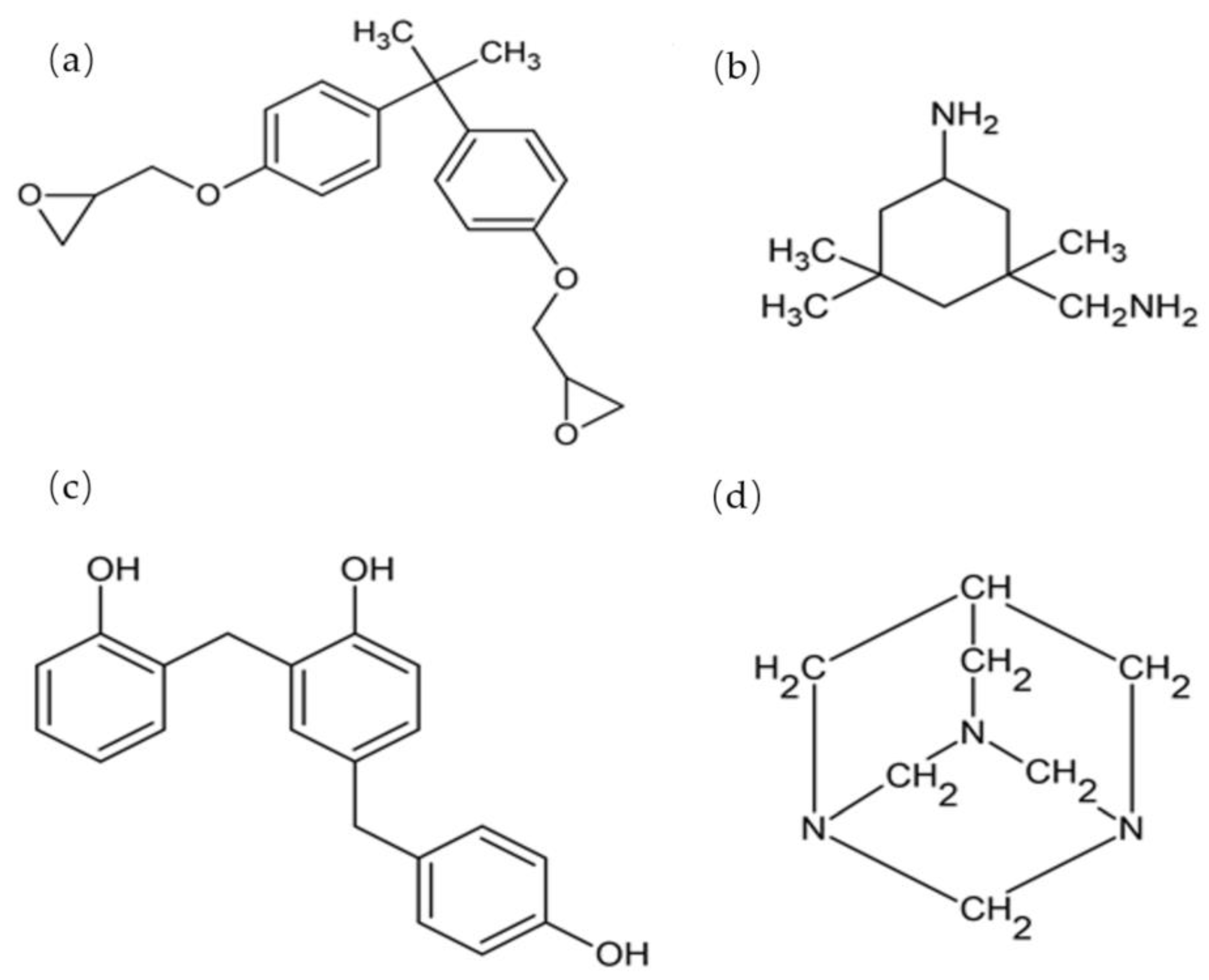
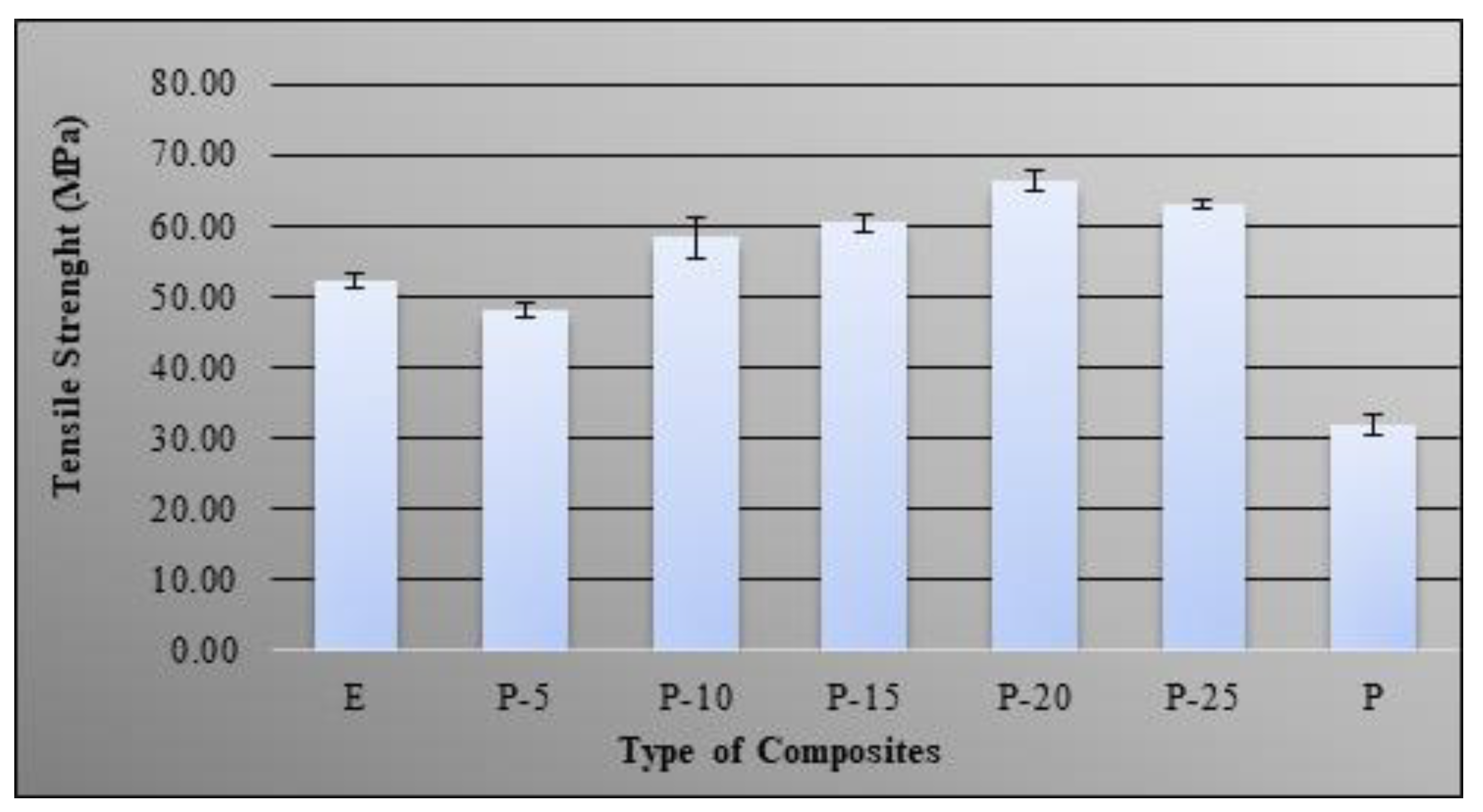

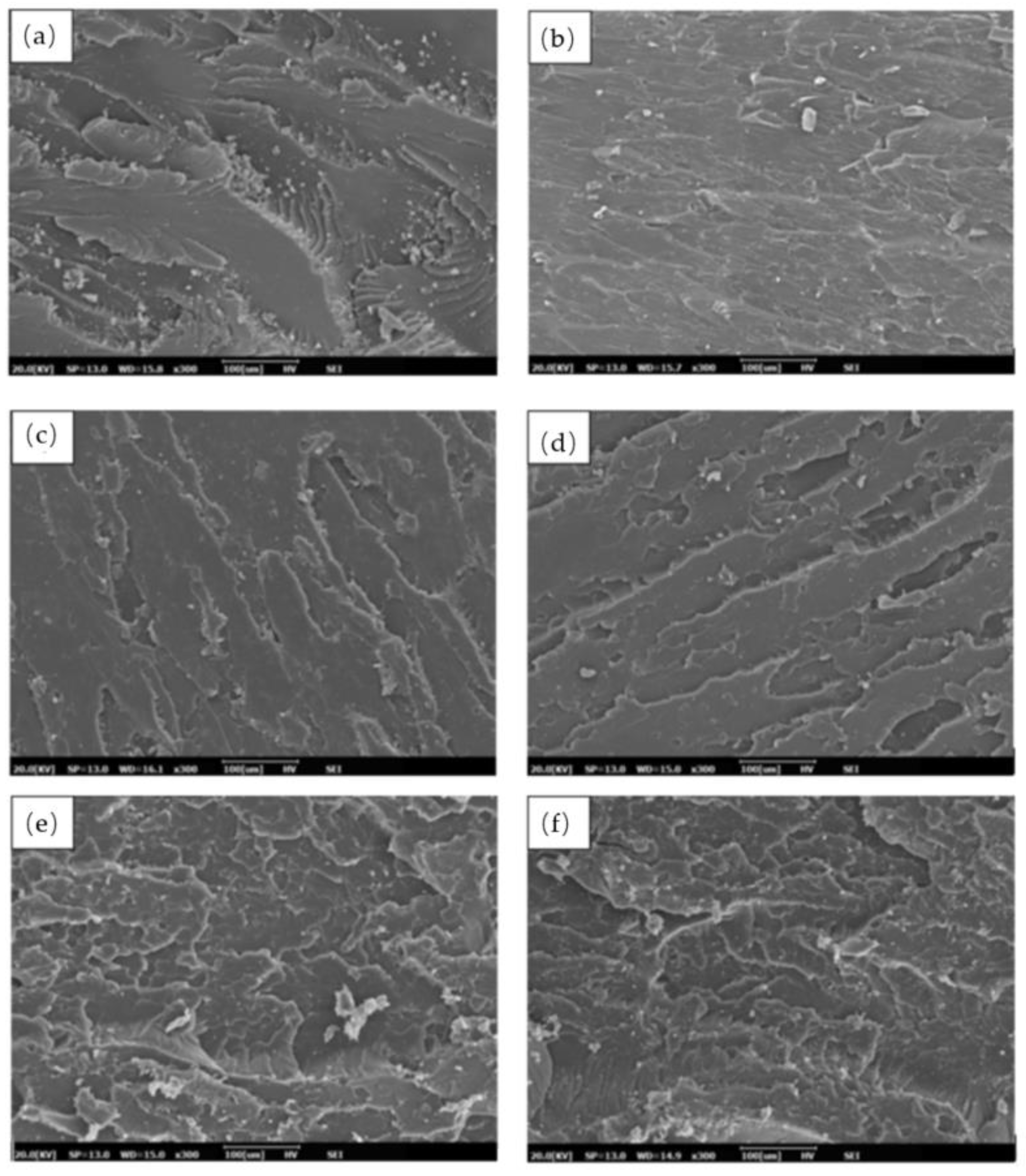

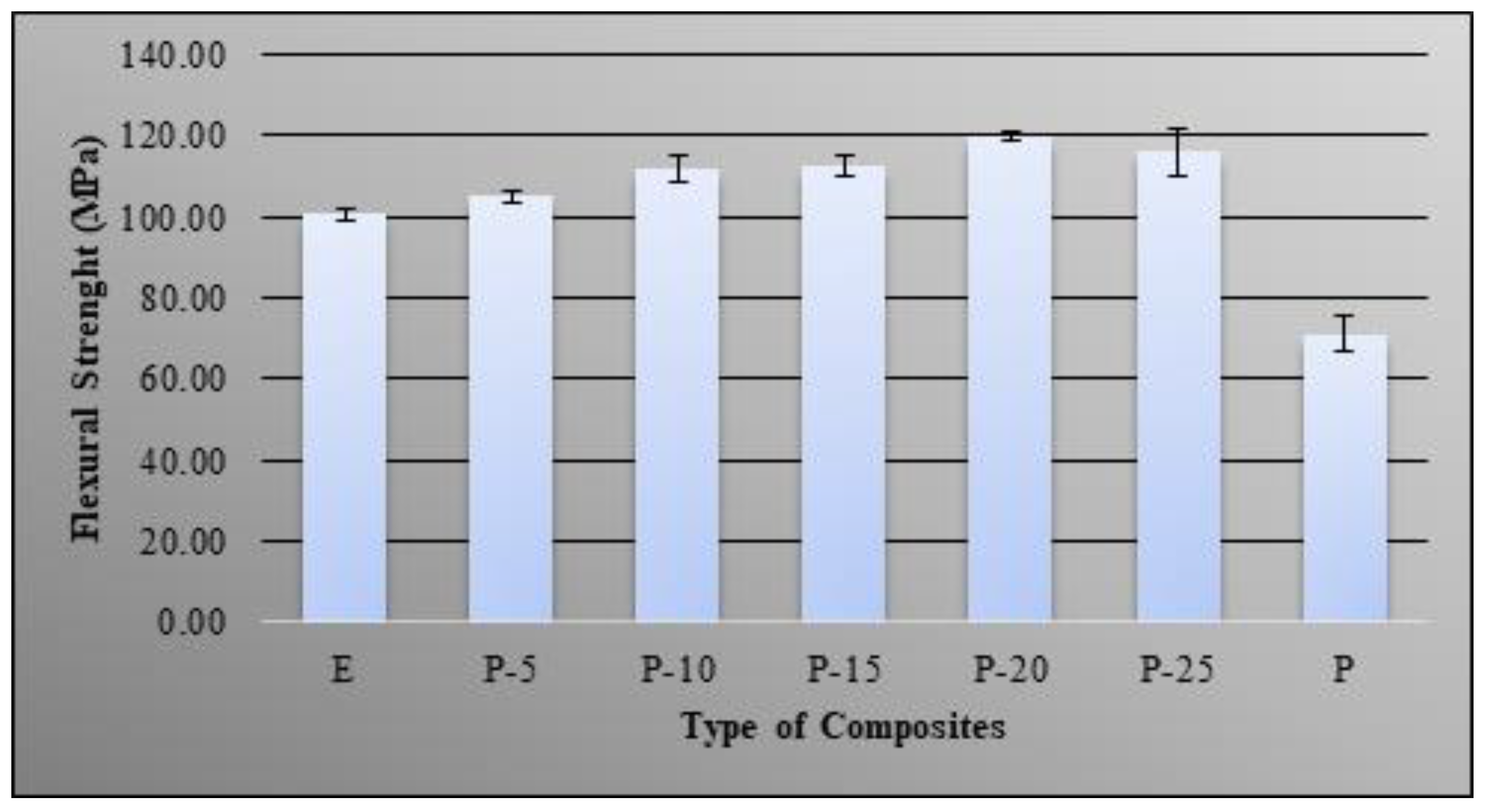
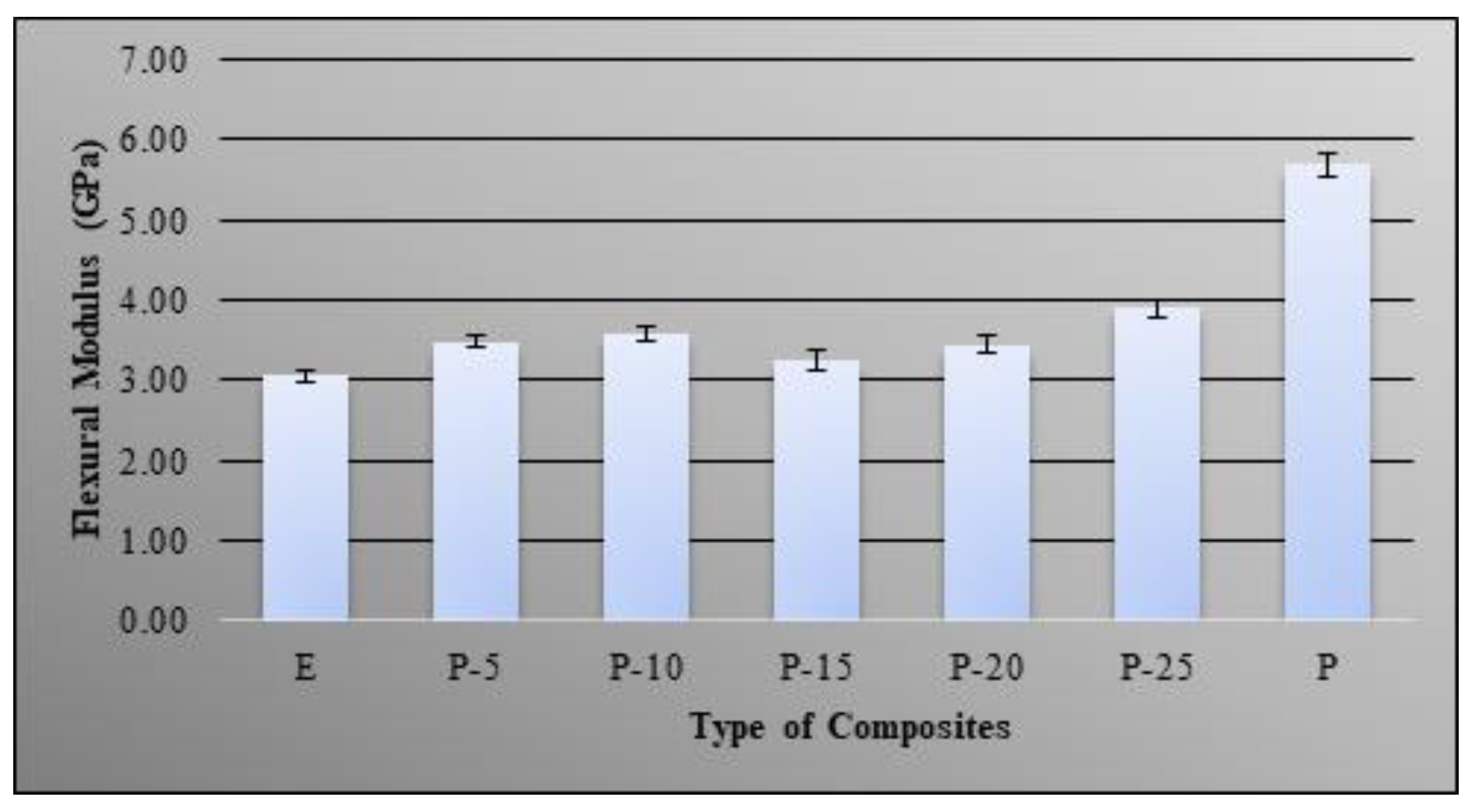
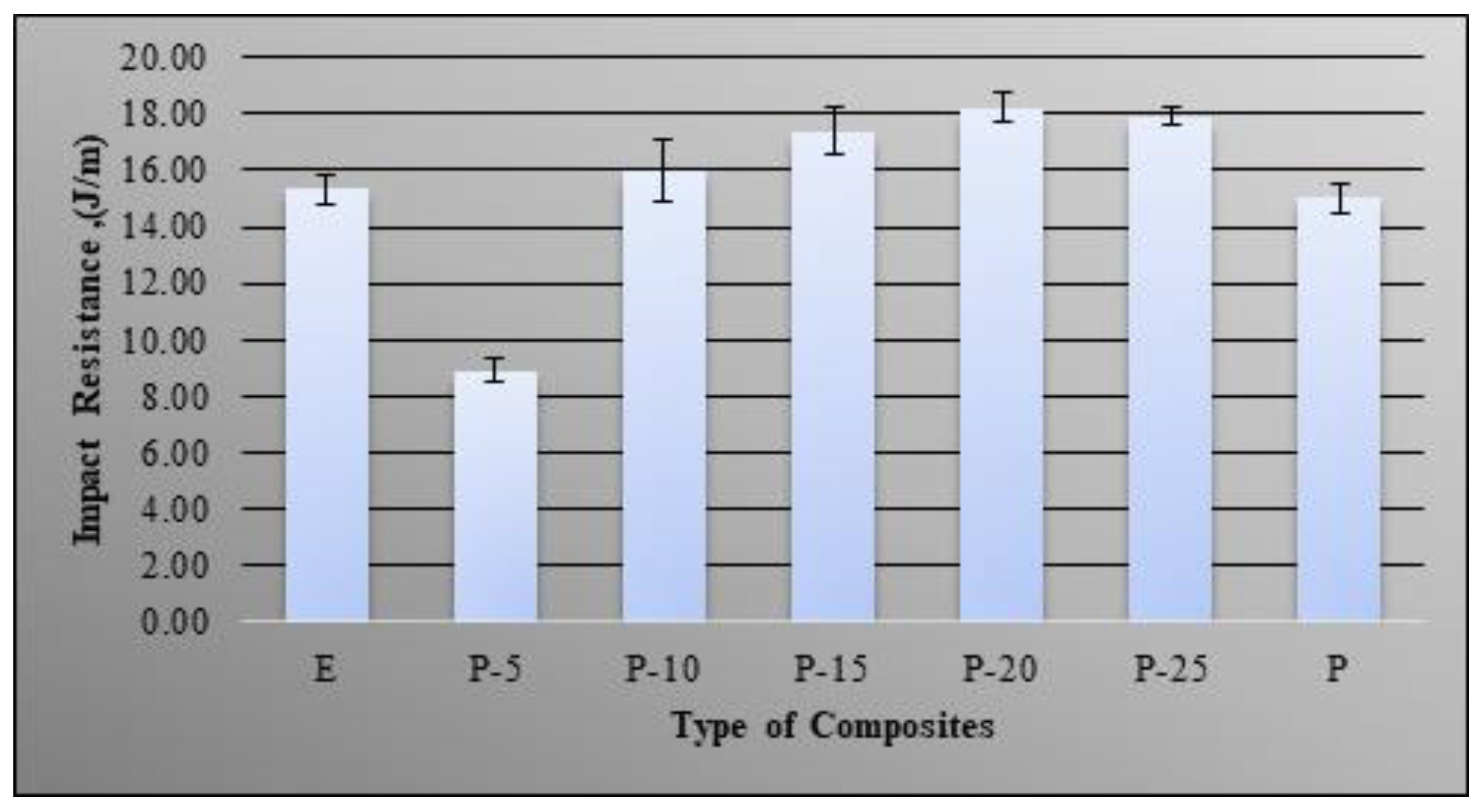
| Property | Value |
|---|---|
| Epoxide Equivalent Weight (g/eq) | 182–192 |
| Epoxide Percentage (%) | 22.4–23.6 |
| Epoxide Group Content (mmol/kg) | 5200–5500 |
| Color (Platinum Cobalt) | 75 Max. |
| Viscosity at 25 °C (mPa·s) | 11,000–14,000 |
| Hydrolyzable Chloride Content (ppm) | 500 Max. |
| Water Content (ppm) | 700 Max. |
| Density at 25 °C (g/mL) | 1.16 |
| Epichlorohydrin Content (ppm) | 5 Max. |
| Shelf Life (Months) | 24 |
| Property | Value |
|---|---|
| Amine value (mg KOH/g) | 300 ± 20 |
| Viscosity (BH type at 25 °C, cPs) | 200∼400 |
| Color (Gardner) | <2 |
| Equivalent Wt (H) | 95 |
| Pot life (100 g at 25 °C) | 75 min |
| Hardness (Shore D) | 85 |
| Thin film set time (at 25 °C) | 5 h |
| Property | Description |
|---|---|
| Physical state | Powder |
| Colour | Reddish Brown |
| Odour | Slide odour of phenol |
| pH | 8–8.5 |
| Melting point by capillary | 81 °C |
| Curing time at 150 °C with 10% hexa by a plate spatula method | 82 s |
| Hexamine % | 10.08% |
| Sieve analysis +200 mesh BS+240 mesh BS | 0.72% |
| Free phenol | <1% strictly |
| Label | Phenolic Resin (wt%) | Epoxy Resin (wt%) |
|---|---|---|
| E | 0 | 100 |
| P-5 | 5 | 95 |
| P-10 | 10 | 90 |
| P-15 | 15 | 85 |
| P-20 | 20 | 80 |
| P-25 | 25 | 75 |
| P | 100 | 0 |
Publisher’s Note: MDPI stays neutral with regard to jurisdictional claims in published maps and institutional affiliations. |
© 2021 by the authors. Licensee MDPI, Basel, Switzerland. This article is an open access article distributed under the terms and conditions of the Creative Commons Attribution (CC BY) license (http://creativecommons.org/licenses/by/4.0/).
Share and Cite
Ismail, A.S.; Jawaid, M.; Hamid, N.H.; Yahaya, R.; Hassan, A. Mechanical and Morphological Properties of Bio-Phenolic/Epoxy Polymer Blends. Molecules 2021, 26, 773. https://doi.org/10.3390/molecules26040773
Ismail AS, Jawaid M, Hamid NH, Yahaya R, Hassan A. Mechanical and Morphological Properties of Bio-Phenolic/Epoxy Polymer Blends. Molecules. 2021; 26(4):773. https://doi.org/10.3390/molecules26040773
Chicago/Turabian StyleIsmail, Ahmad Safwan, Mohammad Jawaid, Norul Hisham Hamid, Ridwan Yahaya, and Azman Hassan. 2021. "Mechanical and Morphological Properties of Bio-Phenolic/Epoxy Polymer Blends" Molecules 26, no. 4: 773. https://doi.org/10.3390/molecules26040773
APA StyleIsmail, A. S., Jawaid, M., Hamid, N. H., Yahaya, R., & Hassan, A. (2021). Mechanical and Morphological Properties of Bio-Phenolic/Epoxy Polymer Blends. Molecules, 26(4), 773. https://doi.org/10.3390/molecules26040773








